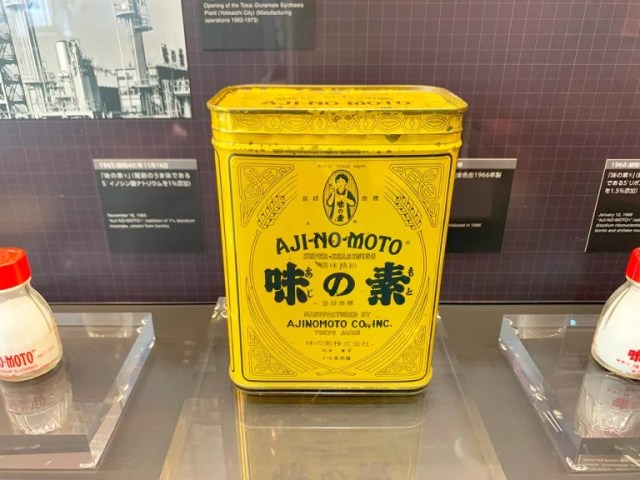
Aji no Moto tasted so good, some people thought there must be some creepy creatures on the ingredient list.
Social media is a double-edged sword, both a way for individuals to connect and share knowledge, but also an avenue for unfounded rumors and even outright lies to spread. Harmful disinformation isn’t an entirely modern problem, though. Case in point: over a century ago, Japanese food and seasoning company Ajinomoto spent years battling a stomach-turning rumor about its signature product.
We found out about this episode from the company’s past while visiting the Ajinomoto Umami Taikenkan, also known as the Umami Science Square, at Ajinomoto’s factory in Kawasaki, the city just south of Tokyo. Though reservations are required for the factory tour, the first-floor museum is open to all and free of charge,
Ajinomoto is best known for Aji no Moto, Japan’s favorite brand of monosodium glutamate. The company was a pioneer in the field, and Aji no Moto can now be found in home kitchens across Japan, becoming so ubiquitous that, like “Levis” or “Kleenex,” “Aji no Moto” is colloquially used to refer to monosodium glutamate in general.
But while Aji no Moto is a familiar foodstuff now, that wasn’t the case when it first went on sale. The seasoning hit store shelves for the first time in 1909, but even 10 years later, Ajinomoto was fighting against rumors that Aji no Moto was…
…made out of snakes.
That photo above is a cartoon from the October 1, 1919 issue of magazine Aka showing a bowl with the Aji no Moto (味の素) logo and at least one snake, if not four, slithering through the bowl. Snapping turtle is pretty much the only reptile that’s considered OK to eat in Japanese cuisine (and not even all Japanese are down with it), so this was a rumor Ajinomoto wanted to quash as quickly as possible. Three years later, though, “Aji no Moto is made out of snakes!” was something enough people were still saying that in the summer of 1922 Ajinomoto felt compelled to run newspaper ads in which the company’s director and co-founder Saburosuke Suzuki asserted, “We hereby swear to all the world that snakes are not used in the production of Aji no Moto.”
▼ The no-snakes-used declaration
Ironically, the rumor doesn’t appear to have gotten started because people thought Aji no Moto tasted snake-y (remember, people in Japan don’t eat snakes in the first place), or even that it tasted bad. Apparently, when consumers got their first taste of MSG, the problem was that it tasted so good, some people figured there must be some kind of unimaginable secret method by which Ajinomoto was breaking the rules, and eventually enough of these conspiracy theorists settled on the assumption “Yep…must be made with snakes.”
▼ You’d think an assumption that something tastes great because it’s made out of snakes would then lead to the conclusion that snakes must be delicious too, but apparently their conviction was only strong enough to spread rumors about Aji no Moto, not broaden their palates.
Thankfully, in time the rumors faded, and now we all know that Aji no Moto isn’t made of snakes, and given that it’s a strongly flavorful powder with a name that translates to just “basis of flavor,” perhaps it was to be expected that some people would inaccurately speculate about what the ingredients are.
So what, accurately, is Aji no Moto made from? This stuff.
And now, let’s preemptively shut down any “Aji no Moto is made out of charcoal!” rumors (even if some kinds of charcoal are edible). The truth is that Aji no Moto is made from kelp, or, as it’s called in Japanese, kombu. It’s made from a lot of kombu, with roughly extracts from 300 grams (10.6 ounces) of kombu required to make just 6 grams of Aji no Moto, which is why a little monosodium glutamate goes a long way.
Today, Ajinomoto makes a wide variety of other seasonings and food products, and is part of the pharmaceutical field too. The Umami Science Square’s exhibits highlight the company’s history and major milestones, including its overseas operations and products. It may not be as big as the Cup Noodle Museum in Yokohama, but it’s a pleasant, informative little place, and even through admission is free, on the way out the staff thanked us for coming and gave us a complimentary pack of their Blendy-brand instant coffee mix.
And no, it doesn’t contain any snakes either.
Location information
Ajinomoto Umami Taikenkan / 味の素うま味体験館
a.k.a. Umami Science Square
Address: Kanagawa-ken, Kawasaki-shi, Kawasaki-ku, Suzukicho 3-4
神奈川県川崎市川崎区鈴木町3番4号
Website
Snake photo: Pakutaso
All other photos ©SoraNews24
● Want to hear about SoraNews24’s latest articles as soon as they’re published? Follow us on Facebook and Twitter!
[ Read in Japanese ]


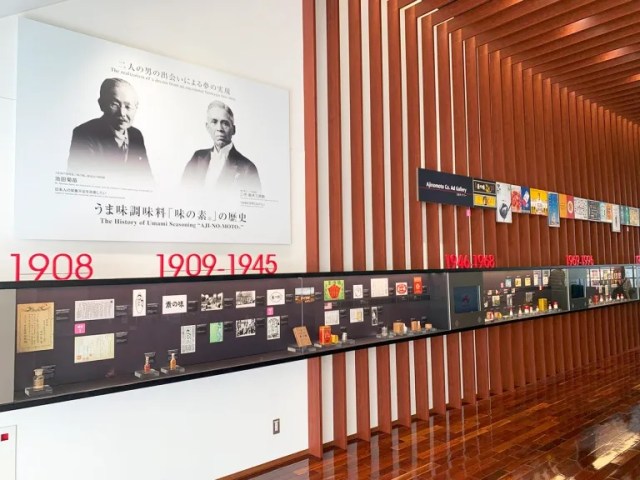
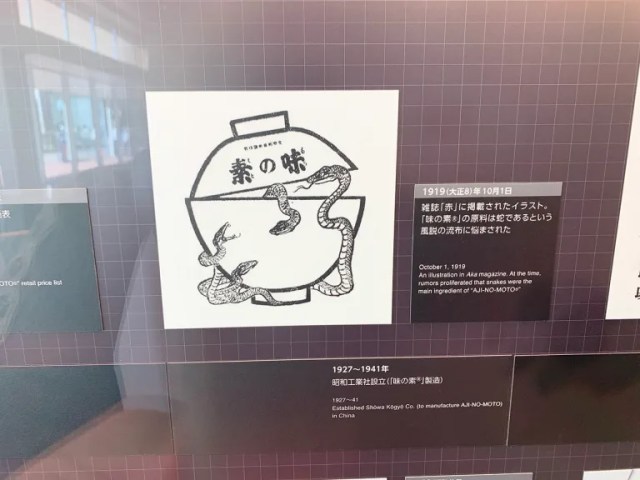
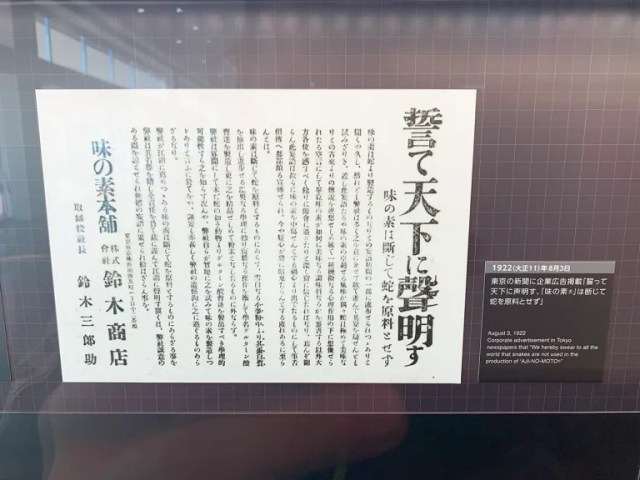
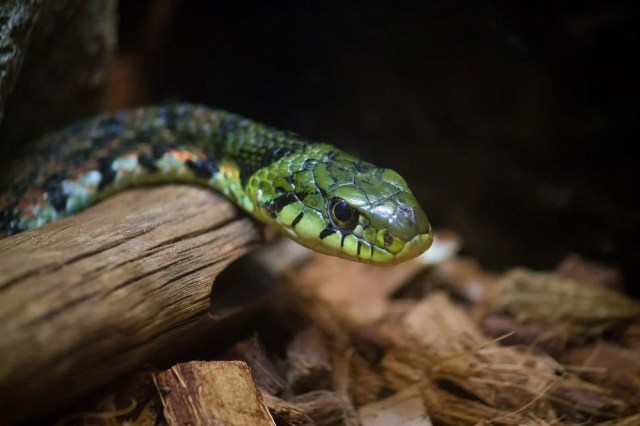

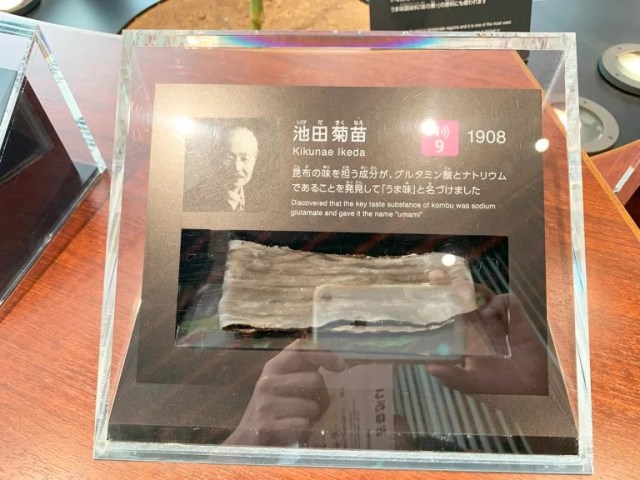

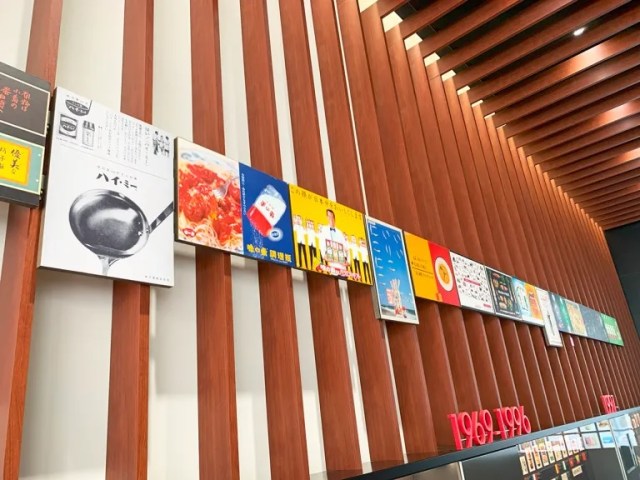

 We try Ajinomoto’s new frozen gyoza, come up with a dangerously delicious way to eat them
We try Ajinomoto’s new frozen gyoza, come up with a dangerously delicious way to eat them Calbee will have you clawing (literally) for their new cola-flavored chips
Calbee will have you clawing (literally) for their new cola-flavored chips Inflation making penguins in Japan unhappy with aquarium’s switch to cheaper fish
Inflation making penguins in Japan unhappy with aquarium’s switch to cheaper fish How to have a great meal at conveyer belt sushi chain Kura Sushi even if you hate raw fish
How to have a great meal at conveyer belt sushi chain Kura Sushi even if you hate raw fish Japanese diners pick their eight favorite types of sushi, create mouthwatering dinner blueprint
Japanese diners pick their eight favorite types of sushi, create mouthwatering dinner blueprint Foreigner’s request for help in Tokyo makes us sad for the state of society
Foreigner’s request for help in Tokyo makes us sad for the state of society Japanese-style accommodation at the new Premium Dormy Inn hotel in Asakusa will blow your mind
Japanese-style accommodation at the new Premium Dormy Inn hotel in Asakusa will blow your mind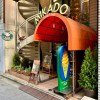 Mikado Coffee is a 76-year-old coffee chain with a major celebrity connection
Mikado Coffee is a 76-year-old coffee chain with a major celebrity connection Japan’s summertime towelket pillowcases are even better with the addition of Ghibli stars【Photos】
Japan’s summertime towelket pillowcases are even better with the addition of Ghibli stars【Photos】 Ghibli Park now selling “Grilled Frogs” from food cart in Valley of Witches
Ghibli Park now selling “Grilled Frogs” from food cart in Valley of Witches Red light district sushi restaurant in Tokyo shows us just how wrong we were about it
Red light district sushi restaurant in Tokyo shows us just how wrong we were about it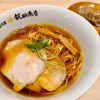 Japanese ramen restaurants under pressure from new yen banknotes
Japanese ramen restaurants under pressure from new yen banknotes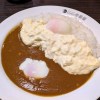 Should you add tartar sauce to Japanese curry rice? CoCo Ichi makes diners an unusual offer
Should you add tartar sauce to Japanese curry rice? CoCo Ichi makes diners an unusual offer The oldest tunnel in Japan is believed to be haunted, and strange things happen when we go there
The oldest tunnel in Japan is believed to be haunted, and strange things happen when we go there Gacha capsule toy paradise for adults appears at Akihabara Station
Gacha capsule toy paradise for adults appears at Akihabara Station McDonald’s new Happy Meals offer up cute and practical Sanrio lifestyle goods
McDonald’s new Happy Meals offer up cute and practical Sanrio lifestyle goods French Fries Bread in Tokyo’s Shibuya becomes a hit on social media
French Fries Bread in Tokyo’s Shibuya becomes a hit on social media New private rooms on Tokaido Shinkansen change the way we travel from Tokyo to Kyoto
New private rooms on Tokaido Shinkansen change the way we travel from Tokyo to Kyoto Tokyo Tsukiji fish market site to be redeveloped with 50,000-seat stadium, hotel, shopping center
Tokyo Tsukiji fish market site to be redeveloped with 50,000-seat stadium, hotel, shopping center Japanese city loses residents’ personal data, which was on paper being transported on a windy day
Japanese city loses residents’ personal data, which was on paper being transported on a windy day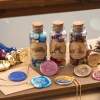 Beautiful Ghibli sealing wax kits let you create accessories and elegant letter decorations【Pics】
Beautiful Ghibli sealing wax kits let you create accessories and elegant letter decorations【Pics】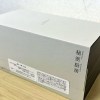 Secret Kitchen bento serves Japanese flowers, birds, wind and moon in a box, but is it worth it?
Secret Kitchen bento serves Japanese flowers, birds, wind and moon in a box, but is it worth it? New definition of “Japanese whiskey” goes into effect to prevent fakes from fooling overseas buyers
New definition of “Japanese whiskey” goes into effect to prevent fakes from fooling overseas buyers Our Japanese reporter visits Costco in the U.S., finds super American and very Japanese things
Our Japanese reporter visits Costco in the U.S., finds super American and very Japanese things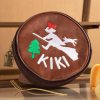 Studio Ghibli releases Kiki’s Delivery Service chocolate cake pouches in Japan
Studio Ghibli releases Kiki’s Delivery Service chocolate cake pouches in Japan All-you-can-drink Starbucks and amazing views part of Tokyo’s new 170 meter-high sky lounge
All-you-can-drink Starbucks and amazing views part of Tokyo’s new 170 meter-high sky lounge More foreign tourists than ever before in history visited Japan last month
More foreign tourists than ever before in history visited Japan last month New Pokémon cakes let you eat your way through Pikachu and all the Eevee evolutions
New Pokémon cakes let you eat your way through Pikachu and all the Eevee evolutions Disney princesses get official manga makeovers for Manga Princess Cafe opening in Tokyo
Disney princesses get official manga makeovers for Manga Princess Cafe opening in Tokyo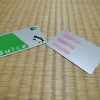 Sales of Japan’s most convenient train ticket/shopping payment cards suspended indefinitely
Sales of Japan’s most convenient train ticket/shopping payment cards suspended indefinitely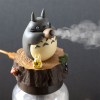 Sold-out Studio Ghibli desktop humidifiers are back so Totoro can help you through the dry season
Sold-out Studio Ghibli desktop humidifiers are back so Totoro can help you through the dry season Japanese government to make first change to romanization spelling rules since the 1950s
Japanese government to make first change to romanization spelling rules since the 1950s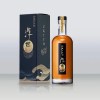 Ghibli founders Toshio Suzuki and Hayao Miyazaki contribute to Japanese whisky Totoro label design
Ghibli founders Toshio Suzuki and Hayao Miyazaki contribute to Japanese whisky Totoro label design Doraemon found buried at sea as scene from 1993 anime becomes real life【Photos】
Doraemon found buried at sea as scene from 1993 anime becomes real life【Photos】 Tokyo’s most famous Starbucks is closed
Tokyo’s most famous Starbucks is closed One Piece characters’ nationalities revealed, but fans have mixed opinions
One Piece characters’ nationalities revealed, but fans have mixed opinions We asked a Uniqlo employee what four things we should buy and their suggestions didn’t disappoint
We asked a Uniqlo employee what four things we should buy and their suggestions didn’t disappoint Foreign student’s comment leads to Japan’s favorite tonkotsu ramen being added to school lunch menu
Foreign student’s comment leads to Japan’s favorite tonkotsu ramen being added to school lunch menu Watermelon soup? We test out a strangely alluring recipe from Ajinomoto【Recipe】
Watermelon soup? We test out a strangely alluring recipe from Ajinomoto【Recipe】 How to make no-rice “fried rice”【SoraKitchen】
How to make no-rice “fried rice”【SoraKitchen】 Professional Chinese food chef teaches us how to make the perfect fried rice
Professional Chinese food chef teaches us how to make the perfect fried rice Who’s got the best, cheapest one-person sushi delivery in downtown Tokyo? Mr. Sato investigates!
Who’s got the best, cheapest one-person sushi delivery in downtown Tokyo? Mr. Sato investigates! Vending machine noodle ice cream: A retro icon in Japan brings joy to a new generation
Vending machine noodle ice cream: A retro icon in Japan brings joy to a new generation We try Ajinomoto’s European Chicken Katsu Curry Style frozen gyoza that has no katsu in it
We try Ajinomoto’s European Chicken Katsu Curry Style frozen gyoza that has no katsu in it Want more meat on your ramen? This restaurant has got you covered
Want more meat on your ramen? This restaurant has got you covered The beautiful booth models of Tokyo Motorcycle Show 2024【Photos】
The beautiful booth models of Tokyo Motorcycle Show 2024【Photos】 Sanrio characters Gudetama and Pom Pom Purin are now sweeter than ever as donuts 【Photos】
Sanrio characters Gudetama and Pom Pom Purin are now sweeter than ever as donuts 【Photos】 Google Japan unveils tea-cup shaped keyboard with open-source all-fish input system
Google Japan unveils tea-cup shaped keyboard with open-source all-fish input system Get a taste of Japan’s past NOW, with these retro snacks and sweets at Tokyo department store
Get a taste of Japan’s past NOW, with these retro snacks and sweets at Tokyo department store Brilliant Art Aquarium takes over Nijo Castle in Kyoto for a spellbinding nocturnal event
Brilliant Art Aquarium takes over Nijo Castle in Kyoto for a spellbinding nocturnal event Around Japan in 47 rice balls: Mr. Sato buys each prefecture’s musubi all from one Tokyo shop
Around Japan in 47 rice balls: Mr. Sato buys each prefecture’s musubi all from one Tokyo shop Japan now has “Gyoza for Athletes”, thanks to figure skating Olympian Yuzuru Hanyu 【Taste test】
Japan now has “Gyoza for Athletes”, thanks to figure skating Olympian Yuzuru Hanyu 【Taste test】 “Science of deliciousness” steak-and-coffee chips, developed by analysing human taste sensors
“Science of deliciousness” steak-and-coffee chips, developed by analysing human taste sensors Downtown Tokyo hotel makes its rooms absolutely free in exchange for one small favor
Downtown Tokyo hotel makes its rooms absolutely free in exchange for one small favor
Leave a Reply